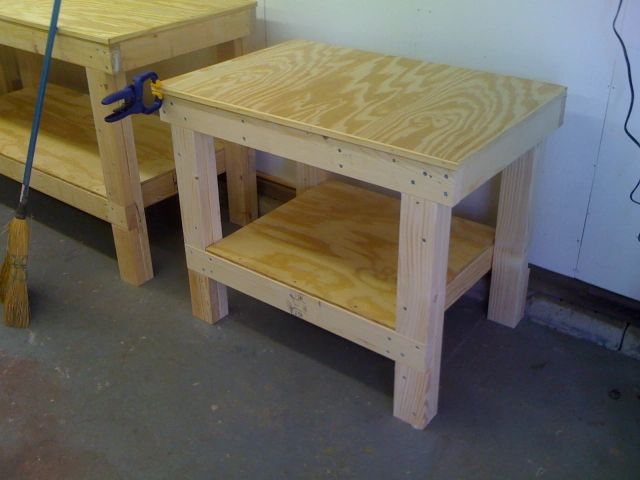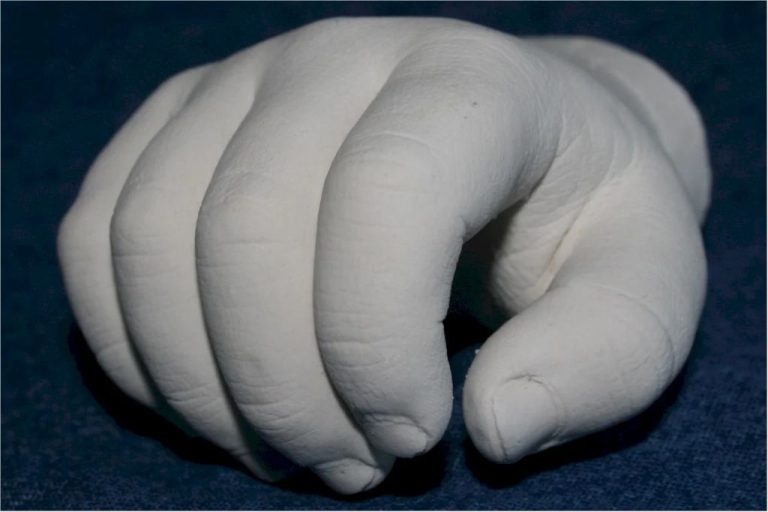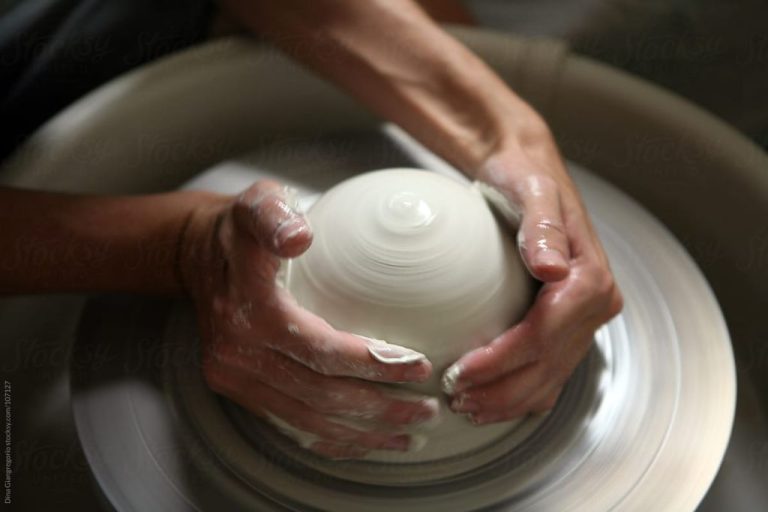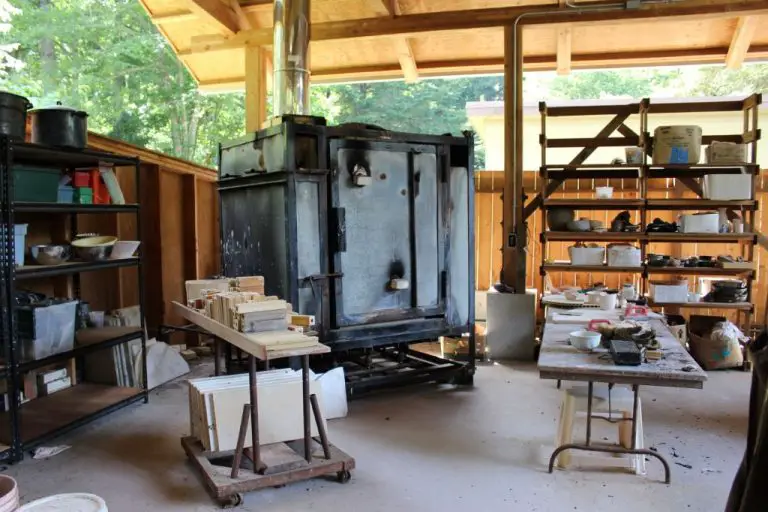What Is A Pottery Maker Called?
A pottery maker is an artist who creates utilitarian and decorative objects out of clay using various techniques. This article will provide an overview of the different types of pottery makers throughout history, the terms used to describe them, the techniques they employ, famous examples, and the continuing legacy of pottery as an artform.
Potter
A pottery maker is commonly called a potter. The origin of the term “potter” comes from the Bible. As explained in A Potter’s Field, the term “Potter’s Field” refers to the place where potters dug clay for their craft. This biblical reference gave rise to calling someone who makes pottery a “potter.”
Potters are artisans who shape clay into functional and decorative objects like bowls, cups, vases, and plates. They create pottery using different techniques like throwing, handbuilding, and slipcasting. The term “potter” is used broadly to refer to anyone who makes pottery.
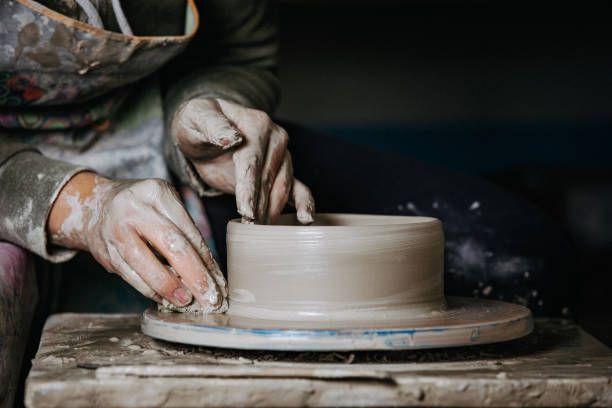
Ceramist
A pottery maker can also be referred to as a ceramist. While the terms potter and ceramist are sometimes used interchangeably, there are some differences between the two.
According to WikiDiff, the main difference is that a potter specifically makes pots and other ceramic wares, while a ceramist makes ceramics in general, which could include pottery but also other ceramic items like tiles or sculptures. So a potter is focused on pottery as their craft, while a ceramist practices the broader field of ceramics.
However, in common usage, potter and ceramist are often synonymous terms for someone who creates functional and decorative objects out of clay by shaping and firing it. Many pottery makers refer to themselves as either a potter or a ceramist.
Craftsperson
A general, broad term for a pottery maker is a craftsperson. According to the Merriam-Webster dictionary, a craftsperson is “a person who practices or is highly skilled in a craft” (Source). As pottery making is considered a craft, someone who creates pottery can certainly be referred to as a craftsperson.
The Cambridge English Dictionary also defines a craftsperson as “someone who makes objects skilfully by hand” (Source). Pottery makers create their works entirely by hand, requiring much skill, so potters fit the definition of craftspeople.
Essentially, a craftsperson is a skilled artisan who practices a specific craft or trade. Calling a pottery maker a craftsperson emphasizes their artistic skill and mastery of the pottery craft.
Artisan
Another common term for a pottery maker is an artisan. An artisan refers to a skilled craft worker who hand makes products using traditional techniques. Pottery makers certainly fall under the category of artisans, as they carefully craft pots, bowls, vases, tiles and other ceramic wares by hand.
Some examples of artisans who create pottery include:
- Studio potters who throw pots on a wheel or hand build pieces in their own workshop
- Production potters working in larger facilities and making multiples of the same design
- Ceramic artists creating unique sculptural works or decorative pieces
These pottery makers are considered artisans because of the specialized skills required and the handcrafted nature of their ceramic wares. Each piece is unique and requires expertise to shape, decorate and fire the clay into a beautiful finished product.
Studio Potter
A studio potter is a type of ceramic artist who creates pottery and other ceramic wares by hand in their own studio (Lam). Studio potters are usually independent artists who design, create, decorate, and fire their own work. They differ from production potters who create multiple copies of the same item for commercial sale (Lam).
Studio potters often work independently and go through the full process of creating pottery themselves – from designing pieces, collecting raw materials like clay and glazes, throwing or hand-building forms, decorating, and firing the kiln. Their work tends to be one-of-a-kind or made in limited editions. Many focus on functional pottery like bowls, mugs, and vases but they may also create decorative ceramic sculptures (Lam).
Studio potters usually sell their work directly to customers through gallery shows, open studio events, craft fairs, or online. Some teach pottery classes or workshops as well. Their work expresses their individual creativity and artistic vision (Lam). They aim to create unique, high quality ceramic wares.
Production Potter
Production potters focus on efficiently creating functional pottery and ceramic wares in large quantities. They work in ceramic factories or studios optimized for mass production rather than one-of-a-kind art pieces. Production potters aim to maximize consistency and minimize costs when producing pottery items. Rather than exploring creative expression, they follow set designs using predetermined manufacturing processes.
In contrast, studio potters focus on creating unique, artistic ceramic works. They craft custom, handmade pottery, emphasizing creative expression over efficiency or quantity. Studio potters experiment with glazes, shapes, textures, and firing methods when making their pottery. Their work celebrates the uniqueness and imperfections of handcrafted ceramics.
Pottery Techniques
Pottery involves several different techniques that potters use to shape and decorate clay. Some of the main techniques include:
Throwing: This involves using a pottery wheel to shape clay into symmetrical forms like bowls, cups, vases etc. Throwing takes skill to center the clay and open up forms using hands and tools. Advanced throwing techniques allow creating more complex shapes.
Handbuilding: Shaping clay into forms like tiles, figurines or abstract shapes using hands, basic tools and molds. Techniques like pinch pots, coils, slabs can be used to handbuild forms. Handbuilding is often beginner friendly.
Slipcasting: Liquid clay slip is poured into plaster molds and allowed to harden to form the shape of the mold. Excess clay is poured out leaving hollow casted forms with fine detailing. Ideal for repetitive and intricate shapes.
Decorating: Potters use techniques like carving, burnishing, sgraffito, mishima to create textures. Colored slips, underglazes and glazes are applied to color and finish surfaces.
Famous Potters
Pottery making has a long and rich history, with skilled artisans practicing the craft for thousands of years across many cultures. Some of the most renowned potters throughout history include:
Bernard Leach (1887-1979) was an influential British studio potter who helped establish the studio pottery movement. He studied pottery in Japan and combined Anglo-Oriental styles in his works. Leach emphasized simplicity and functionality in his pottery and wrote the classic book A Potter’s Book in 1940.
Shoji Hamada (1894-1978) was a Japanese potter along with Leach who helped popularize the mingei folk-craft movement. He created a wide range of pottery from tea wares to vases, combining tradition and innovation. Hamada was named a National Living Treasure in Japan.
Katherine Chare (1898-1993) was a British studio potter who was one of the first women to achieve international recognition. Her experimental and sculptural forms transcended traditional pottery. She was known for her 1994 Coburg prize-winning pot displayed at the V&A Museum.
In modern times, acclaimed potters include Susan Peterson (b. 1944), known for her vividly painted narrative pieces, and Clary Illian (b. 1952), whose coastal-inspired porcelain works have been exhibited globally.
Historic Chinese potters like Ding Yao from the Song dynasty and Shi Dabin from the Ming dynasty also produced masterful porcelain wares still cherished today.
Conclusion
In summary, a person who makes pottery is known by many names. They are most commonly called a potter, which refers to someone who makes any type of pottery. A more specific term is ceramist, which refers to someone who specializes in making ceramic pottery. A craftsperson, artisan, or studio potter are other general terms that emphasize the artistic talent and craft skills involved. Production potters work mainly at manufacturing large quantities of pottery at higher volumes. While there are general names for all pottery makers, the term used can sometimes indicate the type and quality of pottery the person makes. But whether called a ceramicist, craftsperson, studio artist or potter, working with clay to make beautiful and functional pottery items remains a timeless and treasured craft.
We covered the most common names used for pottery makers today, from general terms like potter and ceramist to more specialized names like studio potter. The specific term provides insight into the scale, artistic focus, techniques used, and type of pottery produced. While the general term potter can refer to anyone who makes pottery, names like studio potter demonstrate an artisanal level of skill and mastery. The many famous potters throughout history are a testament to the timeless appreciation for this ancient craft across cultures worldwide.

